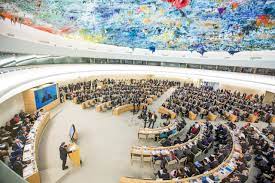FIACAT’s oral statement
Item 3 – Interactive dialogue with the Special Rapporteur on torture and other cruel, inhuman or degrading treatment or punishment
43rdsession of the Human Rights Council
Thank you, Madam President,
Mr. Special Rapporteur,
FIACAT would like to thank you for your annual report and for your attention to the issue of psychological torture.
As you emphasise, the distinction between physical and psychological torture is not always easy to draw, as they often take place simultaneously and each can cause both physical and psychological damages. The distinction is, however, essential, since psychological torture is often not well understood or even not recognised by both the public opinion and the State authorities. Thus, some States have incorporated stricter criteria for the recognition of acts of psychological torture than those defined in the Convention against Torture.
Mr. Special Rapporteur,
The methods of psychological torture are varied. They include threats and intimidation, isolation, overstimulation or sensory deprivation, conditions of prisoners on death row, humiliation etc. Their identification is not straightforward and must take into account a variety of contextual and victim-specific factors. You also question the line between permissible and prohibited non-coercive investigative techniques. On this subject, FIACAT wishes to reaffirm the key role of judicial safeguards in protecting all persons deprived of their liberty from torture.
Mr Special Rapporteur,
In order to combat all forms of torture, it is essential that State officials receive thorough training on the prohibition of torture and the Istanbul Protocol. However, this key tool in the fight against torture is not yet sufficiently recognized and disseminated. FIACAT therefore calls on all States to ensure that this Protocol is included in the training programmes for officials in contact with persons deprived of their liberty.
Thank you for your attention.




